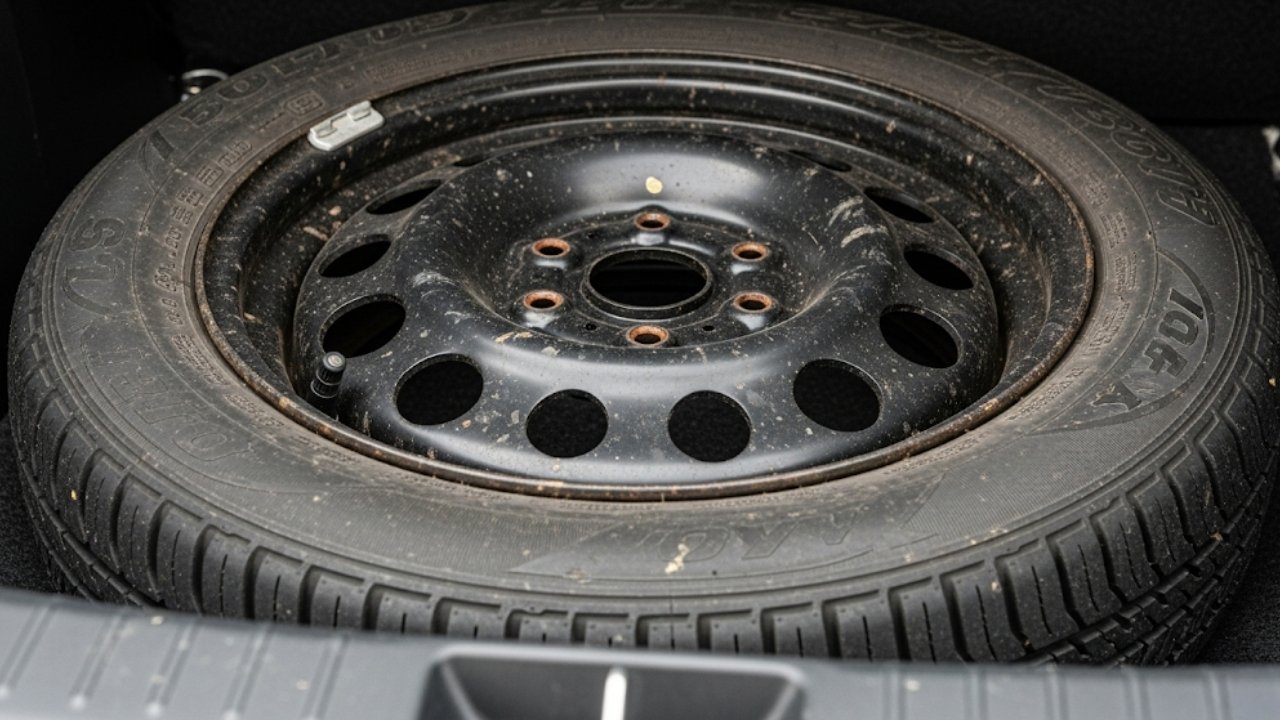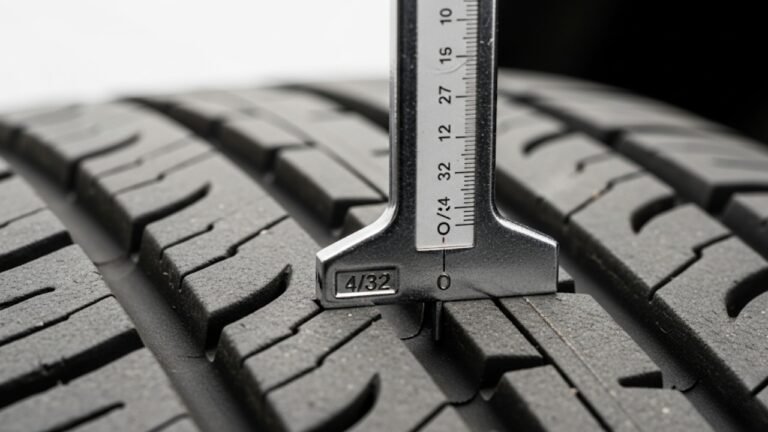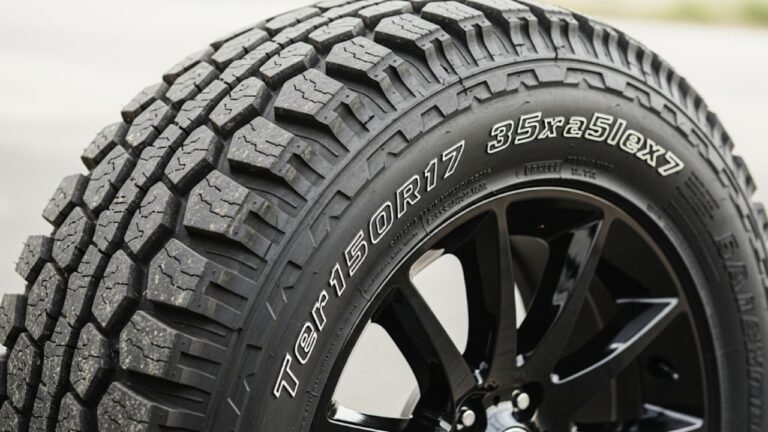Can I Use a Spare Tire for a Week?

It was one of those Mondays. You’re running late, juggling your coffee, bag, and keys, and then bam—flat tire. And there it is—your tiny spare tire, looking more like a pancake than a proper wheel. The first thought? “Can I use a spare tire for a week?” We’ve all been there, and trust me, it’s a valid question.
Driving on a spare tire feels like walking around in flip-flops during a snowstorm. Sure, you can do it—but should you? That’s where we dig in.
Let’s talk reality, not just the textbook answer. We’ll dive into the types of spare tires, how long you can drive on them, the risks, and some personal stories and expert tips to help you make a smart choice. Grab a cup of tea—this is going to be helpful and maybe even a little fun.
What Is a Spare Tire Really Meant For?

There are mainly two types of spare tires:
| Type of Spare Tire | Nickname | Size | Intended Use |
|---|---|---|---|
| Full-Size Spare | Regular Spare Tire | Matches normal | Temporary but more durable |
| Donut Spare | Space-Saver Spare | Smaller & thinner | Emergency, very limited use |
-
Full-size spares are basically your fifth tire—strong and steady. If you’re lucky enough to have one, driving for a week might be okay if it’s properly inflated and matches your other tires.
-
Donut spares, though? That’s another story. They’re lightweight, smaller, and have limited tread. You can drive on them, but they’re designed for no more than 50–70 miles at under 50 mph.
So the real answer to “can I use a spare tire for a week” depends heavily on what kind of spare you’re using.
I Used a Donut for Five Days — Here’s What Happened
I’ll tell you a quick story.
A few years ago, I was headed out for a weekend road trip with friends. About 20 minutes in, I heard that dreaded thump-thump and pulled over. A nail had found its way right into my tire. No biggie, I thought—popped on my donut spare and kept going.
We made it back safely after five days of cautious driving, but not without stress. My steering felt weird. Braking wasn’t as smooth. And honestly? I was a bit on edge the whole time.
When I finally got my tire fixed, the mechanic gave me that look. “You’re lucky you didn’t mess up your suspension,” he said. Lesson learned.
So, while I survived using a spare tire for a week, it definitely wasn’t ideal—and I wouldn’t recommend pushing your luck unless absolutely necessary.
Why You Shouldn’t Drive on a Spare for Too Long
Driving on a spare tire for a week—especially if it’s a donut—can lead to serious issues. Here’s why:
Safety Risks:
-
Poor traction: Donuts have less tread, meaning weaker grip.
-
Longer braking distances: That extra stopping time could be the difference between a fender bender and a safe stop.
-
Unbalanced ride: You’ve got three normal tires and one oddball. That messes with handling.
Vehicle Damage:
-
Can wear out your differential due to uneven rotation.
-
Suspension and alignment may suffer from the imbalance.
-
ABS and traction control systems might malfunction or misread tire input.
So the longer you drive, the more risk you stack up. Think of it like walking with a limp for too long—other muscles start to overcompensate, and you end up hurting something else.
So… Can I Use a Spare Tire for a Week?
Here’s the honest breakdown:
-
Donut spare? Only if it’s absolutely necessary. Even then, stick to short trips, low speeds, and try to fix the real tire ASAP.
-
Full-size spare? You’ve got more wiggle room. If it’s properly inflated and in good condition, yes—you can drive it for a week (maybe even more). Just make sure it matches the others in tread depth and size.
Tip: Always check your car’s manual. Manufacturers are super clear about how long and how far you can drive on their spares.
What Happens If You Push It Too Far?
If you ignore the warnings and use a spare tire for a week or longer, you could end up with:
-
Uneven tire wear
-
Wobbly steering
-
Brake problems
-
A blown-out spare (yes, it happens!)
-
Or worse… an accident
Mechanics often compare it to overusing a temporary crown on a tooth. It’s there to get you by—but wait too long, and you’ll need a root canal (or a new axle).
How to Safely Drive on a Spare Tire (If You Absolutely Have To)
Okay, so maybe you have to use a spare tire for a week—maybe you’re waiting for a part, payday, or a decent mechanic. Life happens. If that’s your reality, let’s at least make it safer.
Here’s what you should do:
-
Check the pressure: Most donuts require 60 psi, much higher than standard tires.
-
Avoid highways: Stick to local roads where speeds are lower and help is nearby.
-
Limit distance: Even if you’re stretching the week, keep trips short and sweet.
-
Drive gently: No quick turns, sharp brakes, or fast acceleration. Pretend you’re driving grandma’s antique vase to a museum.
-
Monitor the tire constantly: Look for wobbling, odd sounds, or vibration.
If your spare is full-size, treat it like a regular tire, but still check for uneven wear, especially if it’s older or mismatched. Some full-size spares sit unused in the trunk for years and might be dry-rotted.
Signs You’ve Been on a Spare Too Long
Like overstaying your welcome at a party, a spare tire starts showing signs it’s had enough:
-
Vibration or thudding while driving
-
Tire looks deflated or wears unevenly
-
Dashboard lights (ABS, traction, TPMS) flicker on
-
Brake feel changes—soft, spongy, or delayed
Driving past these signs doesn’t just risk the spare—it puts your entire car in danger. If your steering starts to feel like you’re turning a shopping cart with a broken wheel, it’s time to stop.
Can I Replace a Tire at Home? Yes, But…
If you’re confident and handy, you can replace a tire at home. But here’s the catch—mounting a tire isn’t the same as changing one. Mounting and balancing requires special tools.
Here’s what you can do at home:
-
Buy a new tire online or locally.
-
Remove the flat and bring it (or the wheel) to a tire shop.
-
Let them mount and balance it properly.
-
Put it back on yourself.
Trying to use a tire without proper balancing? That’s like trying to run in one heavy boot and one flip-flop. The wobble will drive you crazy—and damage your ride.
Affordable Ways to Get a New Tire Fast
Not everyone can drop $150+ on a new tire instantly. But you’ve got options.
-
Used tire shops: Local shops often sell lightly-used tires for half the cost.
-
Tire financing: Many retailers offer “buy now, pay later” plans.
-
Road hazard warranties: If you bought tires from a big brand, you might already be covered.
-
Tire recycling centers: Sometimes you can get free or discounted tires here.
Pro Tip: Ask your mechanic if they have a “take-off” tire from another customer. These are often almost new and way cheaper.
Let’s Talk Real Life: Why People Stretch It to a Week
Now, I know we all like to follow the rules—but real life? It’s not always that simple. Maybe:
-
You live far from a tire shop.
-
Payday isn’t for a few days.
-
You’ve got to pick up your kids or make it to work.
Driving on a spare tire for a week becomes a necessary gamble for many. And I get it. When I used mine for five days, I had zero wiggle room in my budget. Every trip to the store felt like rolling the dice.
This isn’t about scolding—it’s about giving you the tools and facts so you can weigh the risk, protect your car, and stay safe.
What to Do Once You’re Back on Four Normal Tires
Once you’ve finally swapped out that temporary tire:
-
Get an alignment check—spares can throw off your geometry.
-
Inspect your suspension and brakes for stress or wear.
-
Check the tread depth of all four tires. If your spare wore unevenly, it could affect the others.
Bonus: Keep your old full-size tire (if it’s repairable) and use it as your new spare. It’ll save you cash down the road.
FAQs: Everything You’re Still Wondering About Spare Tires
1. Can I use a spare tire for a week if it’s a full-size spare?
Yes, if it’s properly inflated, has good tread, and matches your other tires. Just remember to treat it like a real tire—get it rotated and balanced.
2. Is it dangerous to drive on a donut spare for a week?
Yes, it can be. Donuts are meant for short distances at low speeds. Prolonged use increases your risk of blowouts, brake issues, and suspension damage.
3. How do I know if my spare tire is a full-size or a donut?
Check the size and markings on the sidewall. A full-size spare will match your regular tires, while a donut is visibly smaller and narrower.
4. Can I drive on the highway with a donut tire?
It’s not recommended. Most donuts have a speed rating of 50 mph. Highways require higher speeds, making it unsafe and potentially illegal in some regions.
5. How much does a new tire cost?
New tires range from $80–$200 depending on size and brand. Used tires can cost $30–$60. Always balance cost with safety.
6. Can a spare tire mess up my alignment?
Yes, especially if it’s a donut. The uneven size and pressure can cause your suspension to adjust unnaturally, affecting your alignment over time.
7. How long can a spare tire sit unused?
Tires, even unused, degrade over time. Most spares are good for 6 to 10 years. Check the DOT date code on the sidewall to be sure.
8. Is it okay to replace one tire at a time?
It depends on your drivetrain. With AWD, replacing one tire could cause wear issues. With FWD or RWD, it’s safer, but always match size and tread depth as closely as possible.
Final Thoughts: Don’t Let the Spare Tire Stretch Turn Into a Gamble
So, to bring it all together—can I use a spare tire for a week? The short answer is: maybe, but only if you must.
If it’s a donut, you’re walking a fine line and should replace it as soon as you can. If it’s a full-size spare, you’ve got more time—but not forever. Either way, treat it with care, respect the limits, and make safety your top priority.
Spare tires are a gift in a bind—but not a permanent solution. Like that one friend who offers you a couch to crash on, they’re great short-term… but eventually, you’ve got to get back on your own four wheels.





